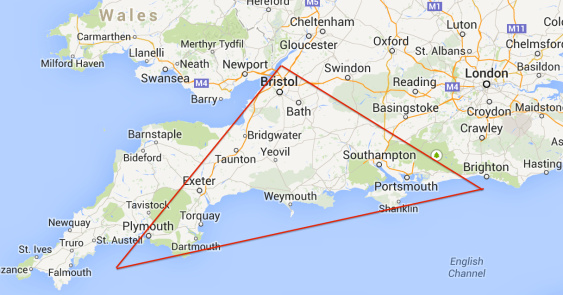185 years ago today, William Tagg and Elizabeth Weeks were married at St. James Church in Bristol, England. Later that same day, William, Elizabeth and 18 steerage passengers boarded Capt. John Johnson’s Unity and set sail for New York. William and Elizabeth never saw Britain again. I have a few possible theories as to why my newlywed fourth great-grandparents left England but that is a discussion for a different post. This is a small synapsis about William’s undiscovered origins, his life in Bristol and the son he left behind.
Only two sources I have found give an approximate date for William’s birth: the Unity’s passenger manifest from 1829 and William’s 1840 Manhattan death record. The manifest states his age at 39, meaning a 1790 birth while the death record says he passed at age 52, meaning a 1788 birth. In either case, William was born about 1789. To this date, numerous William Tagg’s have appeared in records across England but nearly all appear to be accounted for in later census data. My search in still inconclusive as he may have been born in a place where I still haven’t searched.
William Tagg neither appears Bristol’s nor England’s apprenticeship records. It is entirely possible this search will turn on finding a record. The starting age for apprenticeships in England is about 14. Any record of William’s apprenticeship would appear between the years 1800 to 1804. If William’s father was a brushmaker, then he would not likely appear as an apprentice as he would have learned the trade from his father.
The earliest account of William’s whereabouts is 1815. On 7 August 1815, William married Mary Banford at St Andrew’s Church in Clifton, a town adjacent to Bristol. The sole family witness was a man named James Banford. A man of the same name, possibly the witness himself, or a close relative, ran a pub called the Cock and Bottle, near St. Peter’s Church where Bristol Castle once stood. It is this church where William’s two sons by Mary were baptized in 1821. Thomas was three at the baptism while William was an infant. Burial records for St. Peter’s indicate that William and Mary had a daughter, Elizabeth, who died in 1816 in infancy. In 1823, five-year old Thomas and Mary died, leaving the two Williams, father and son, alone, living in the Lawrence Hill area of Bristol.
The 1829 record of journeymen brushmakers shows that William Tagg was indeed a Bristol brushmaker. This is the only other record of William I have identified. After the passenger manifest record, the next time a brushmaker named William Tagg is in a public record is 1830. It is the same William, living on Mott St in Manhattan. Curiously, the younger William did not accompany his dad and stepmom to America. He stayed in England, presumably in Bristol, apprenticing as a brushmaker and would become a journeyman, like his father. Who was his guardian?
I first encountered the younger William Tagg in English census records in 2012. His occupation and date of birth were fortuitous because I had not seen his baptismal record from Bristol. It was more of an educated guess that he could be a child of William and his first wife. The younger William’s marriage record answered the fundamental question. It confirmed he was the older William’s son. It also caused me to reexamine my search for my Tagg ancestors. The New York Taggs that I knew of, had English cousins living across the Atlantic.
In England’s 1841 Census, young William was a 19-year old apprentice maybe to a William “Svert” (maybe) and his wife Ann in Teighmouth, Devon. Ten years later, William shows up in a list of brushmakers. In the 1851 Census, William, now listed as 30, is living with another brushmaker, John Goodger and his family. Goodger is named in a few brushmaker sources. John, born in Hampshire and his wife Ann born in Surrey, have no discernible link to Bristol that I have discovered. However, Ann is John’s second wife. Perhaps her first husband or her maider name will reveal a connection. What is also curious are the next door neighbors. The family name: Tigg! Is it just coincidence? The head of the family, Thomas Tigg, is from Hampshire, south of Bristol. Perhaps Thomas is related to Ann?
The younger William’s marriage to Fanny Marchant in 1855 revealed family and friends that could be long lost cousins. Fanny is from Newton St. Low, Somerset, a town situated between Bristol and Bath (where numerous Taggs lived in the late 1700s). One of the two witnesses at the marriage was Louisa Honey, who herself married in 1855. Her maiden name was Louisa Maggs from Newton St. Low and the witnesses were William and Fanny. The obvious fact is the similarity between Maggs and Tagg. What is more interesting to me is that the aforementioned Cock and Bottle’s subsequent publican (the guy who ran the pub) was named Timothy Maggs.
The evidence, as it stands, seems to point to older William being born somewhere west of London. Maybe Bristol, possibly Bath and its surrounding environs or somewhere south, in a town in Devon, Somerset, or Hampshire. For now, William Tagg the Brushmaker remains the genealogical brick wall that will not crack. If I had to venture an educated guess, I would say William was probably born inside the red triangle you see below.


